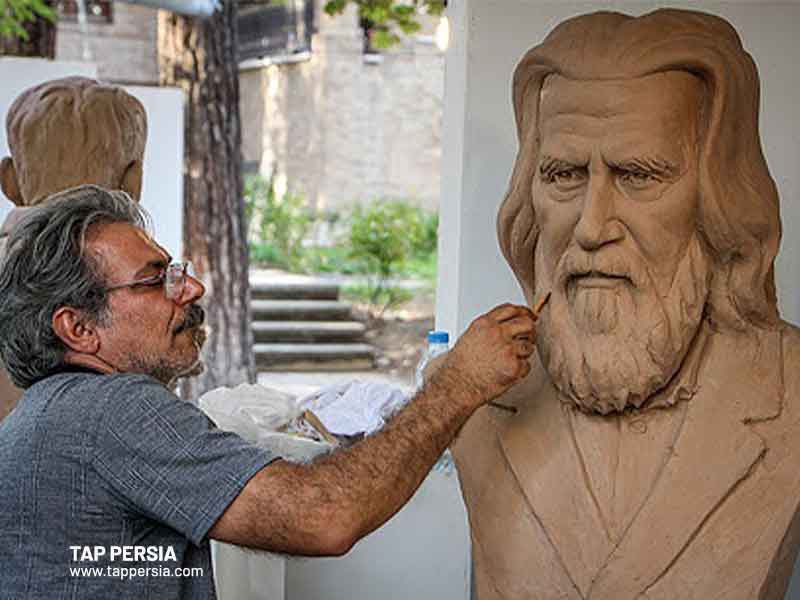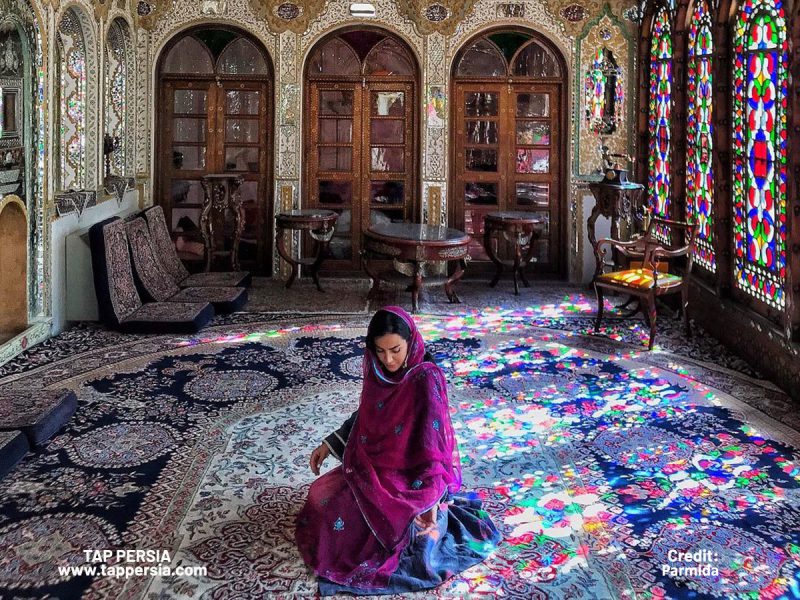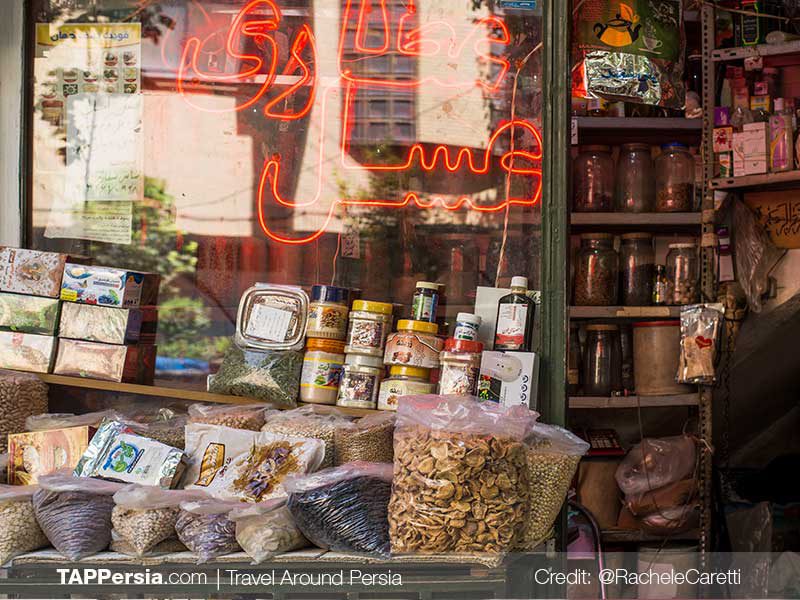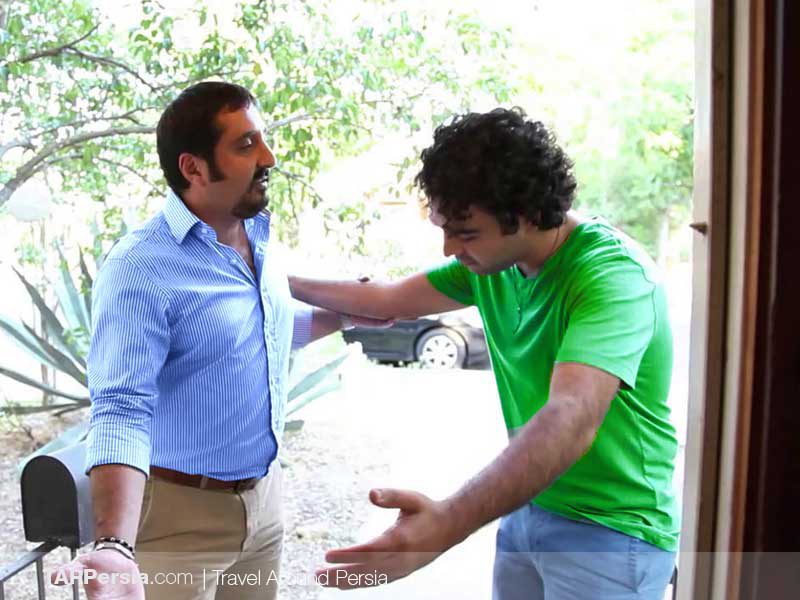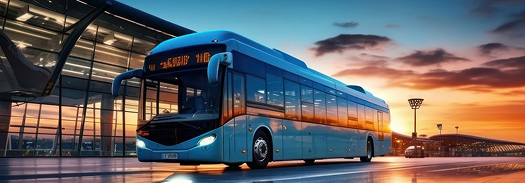Iran, a country that is primarily Muslim, has a sizable Christian population. The vast majority of Iranian Christians are ethnic Armenians, commonly referred to as Parska-Hye, who practice Oriental Orthodoxy and have their own unique festivals and customs. Other Christians include Assyrians, Catholics, Protestants, and Evangelicals.
Iranian Christians observe the holiday by putting up Christmas trees, sharing presents, and going to services during Christmas in Iran. During Christmas in Iran, Christmas Trees may be seen from windows throughout Tehran and the northwest regions of the nation. Christians in Iran are allowed to practice their religion and carry out their religious rituals despite being a minority religious group in that country.
Christmas Eve in Iran
Christmas in Iran is acknowledged and celebrated even by non-Christian Iranians, especially the younger generation, even though it is not a national holiday.
Hotels and other places, such as shopping malls, put up Christmas trees and other decorations throughout the holiday season in honor of the Iranian Christian population. However, how do you say Happy Holidays in Iran? The phrase is “Christmas Mobarak!” As a result, Christmas in Iran is clearly celebrated with a joyful mood, with each area celebrating in accordance with its long-standing local customs(Persian calendar ).

In Iran, Christians observe Christmas every year by putting up Christmas trees, sharing presents, and going to services. Iran Christmas is on the evening of December 25, and it is also observed on January 6 by Iranian Armenians as Epiphany.
Famous Churches in Iran
There are 600 Churches in Iran but we will talk about the top most popular ones.
Qara Kelisa Church, Chaldoran
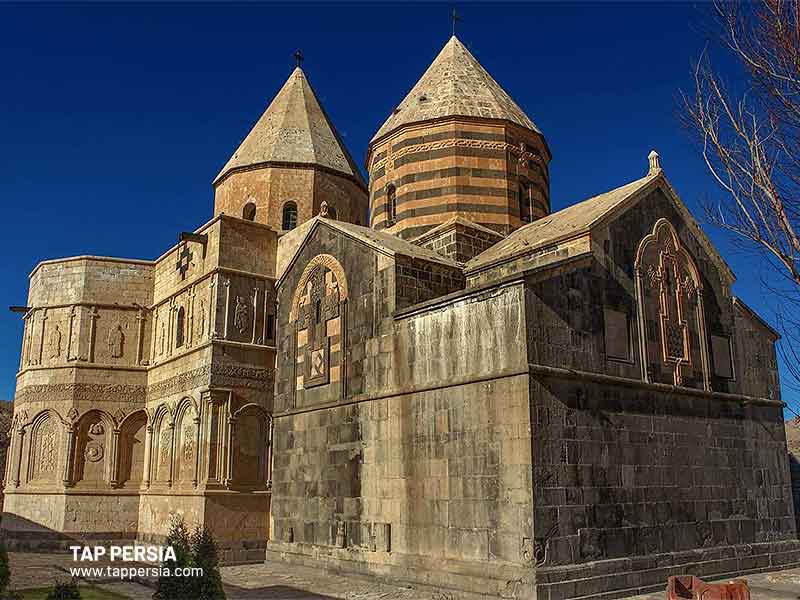
One of the most magnificent holy locations in Christianity is the Church of St. Thaddeus, also known as Qara Kelisa, a black and white stone structure that is included on the UNESCO World Heritage List.
According to the Armenians, the preachers and apostles of Christ built the Church of St. Thaddeus, which is recognized as the First Christian Church in the World. The church has the name of one of the apostles of Jesus Christ who went to Ardaz in northwest Iran in the years 40 or 43 to preach this faith.
Without a doubt, the most well-known church in Iran is the Qara Kelisa Church. Additionally, the church has been a part of the UNESCO World Heritage List since 2008. A large number of Armenians and Christians from Iran and other countries travel to this church during Christmas in Iran, which is located 20 kilometers northeast of Chaldaran in the province of West Azerbaijan.
Vank Cathedral, The Holy Savior
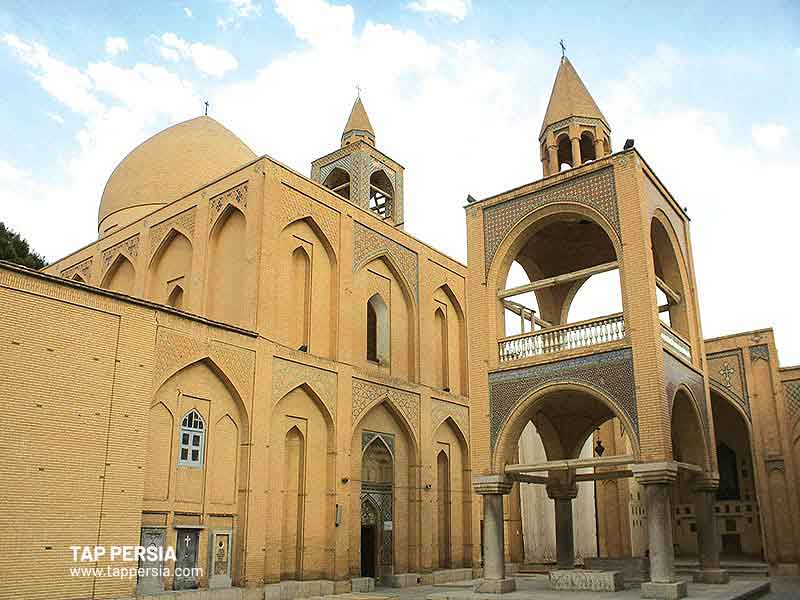
Vank Cathedral, one of Isfahan’s older Armenian churches, was built during the reign of King Abbas II. In Armenian, a monastery is referred to as a vank. The entrance door is also topped by a bell tower with three levels and a 300 kg hour bell on the second floor. This bell tower, which dates to 1931, was a gift from a store owner named Mardyrus Hordanian.
Vank Church is unique from other old Armenian churches in a variety of respects. Its overall size is 8731 square meters, and its built-up area is 3857 square meters.
Old Testament-themed paintings and murals depicting scenarios from the conception of Jesus Christ to his resurrection, the Day of Judgment, Paradise, and Hell cover every wall and area of the church. Eunice Avedik Stepanos commissioned these works from three Armenian artists: Khalifa Hwanez Mercos, Pastor Stepanos, and Professor Minas.
This church’s paintings are really its most important feature, placing it among Iran’s most exquisite cathedrals. Oil paintings were used to embellish the church’s walls, arches, dome interior, and other surfaces in “Tazhib” and Armenian Islamic styles. The church also featured gildings, which greatly improved its extraordinary beauty.
At various times throughout the year, including Iran’s Christmas, the Vank Church is also among the most well-known Christian gatherings.
Cantur Church, Qazvin
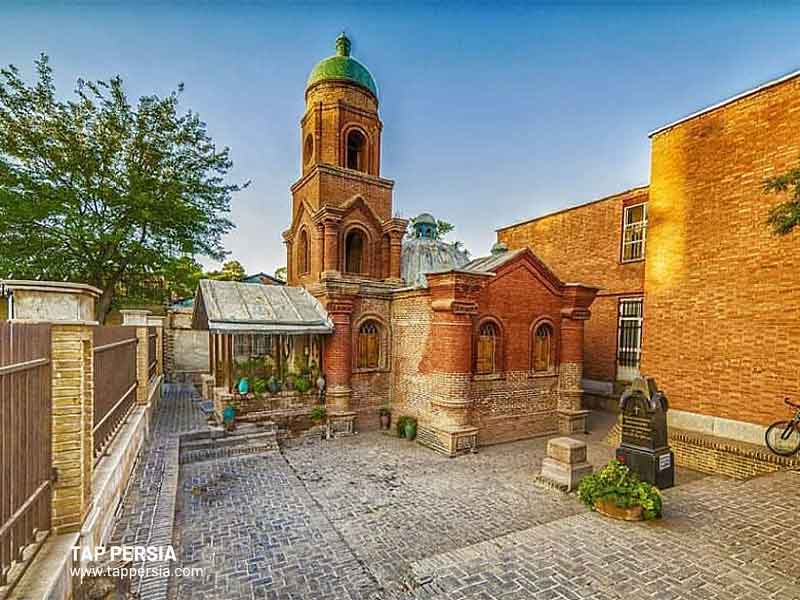
After Nasser-e-Din Shah (1848–1896) visited France, efforts to build roads between the towns to connect Tehran with Europe began. The Tehran-Qazvin road was built by Saad al-Saltanah, the following governor of Qazvin, whereas the Anzali road was built by a Russian company called “Insurance and Transport.” The company was run by a person by the name of “Anatoly Nekalayevich Bastelma.” A little church in Qazvin, built by Russian engineers, is characterized by its red brick facade and blue dome.
There is a bigger dome in the center of the sanctuary and a smaller dome atop the altar that faces east in this cruciform church, also known as the bell tower in the neighborhood. The entrance is located on the western side of the church and includes a gated area with a pitched roof. Following the entrance, there is a small anteroom with a dome above it, and a three-story bell tower with a height of around eleven meters is constructed above it. As a reminder of their place of origin, Russian crosses are hung from only two sides of the entry walls.
The graveyard, which isn’t very big, is covered in gravestones. Russian engineer Nikolai Alexandrovich, who died in the solar year at the age of 9, is interred in one of the graves designated by a black stone. The chapel also has a stone that belonged to a Russian pilot who, according to folklore, crashed near the city during World War I and was buried there. It is located next to the tombstone.
St. Stephanus, Julfa
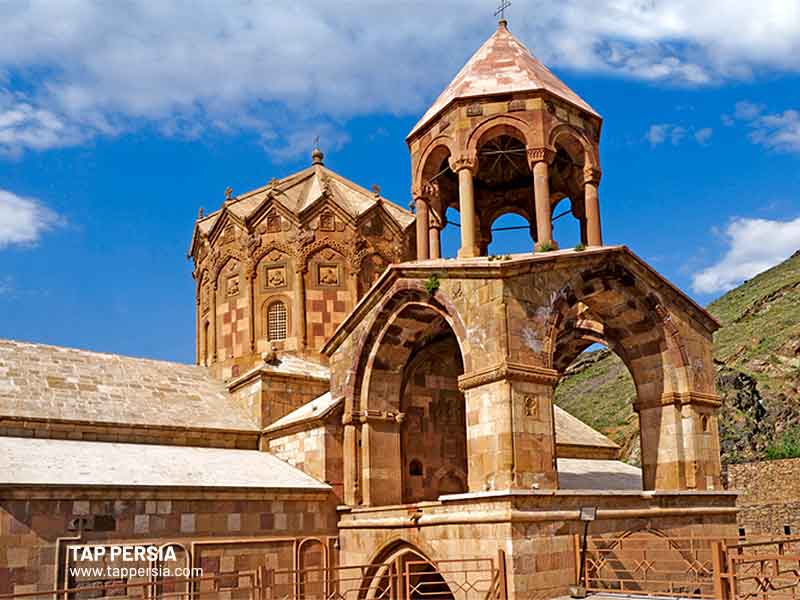
The second-most notable Armenian church in Iran is the Saint Stepanos Monastery Church, which is included on the World Heritage List.
The church was repaired during the Safavid era after suffering major earthquake damage in the ninth century AD. Stephen (St. Stephanus), one of the early martyrs of the Christian religion, was also one of Christ’s apostles and the first Christian speaker. Today, there are a lot of churches carrying his name all around the world. He has stoned to death in Jerusalem in the year 36 AD for preaching against Jewish law.
St. Stepanus Church is located in the center of a beautiful valley in the hilly part of the East Azerbaijan Province, 16 kilometers west of Jolfa, and is surrounded by a stone wall and seven watchtowers that give it the appearance of a fort. The church is made up of the sanctuary, Daniel’s furnace, and the bell tower.
Iranian Armenians have a particular place in their hearts for the church since they often gather there to perform rites on various days throughout the year.
Saint Mary Church, Tabriz
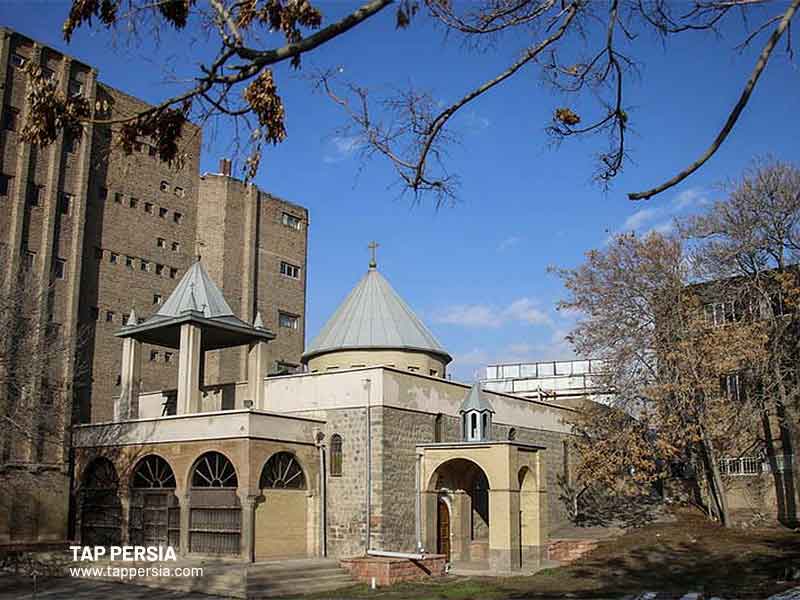
Given that it is at least 500 years old, it is not surprising that Christians in Tabriz chose this site for their important celebrations and meetings. The largest and oldest church in the city is where the Armenian Apostolic Church of Tabriz has its annual national religious festival.
Based on the oldest gravestone in the structure, it is likely that the church dates to at least the 16th century AD, during the Safavid dynasty. However, the church portal’s style is similar to that of the Ilkhanid period, indicating that it may have been constructed much earlier.
Marco Polo’s itinerary, which mentions a chapel in Tabriz on his trip to China in addition to the Ilkhanid-era structures, provides another clue.
The church was built in the Armenian architectural style and is shaped like a cross. Icons of the Virgin Mary, Jesus, saints, and apostles are adorning the corners of the dome and the walls of the altar.
Christmas Culture and Traditions in Iran
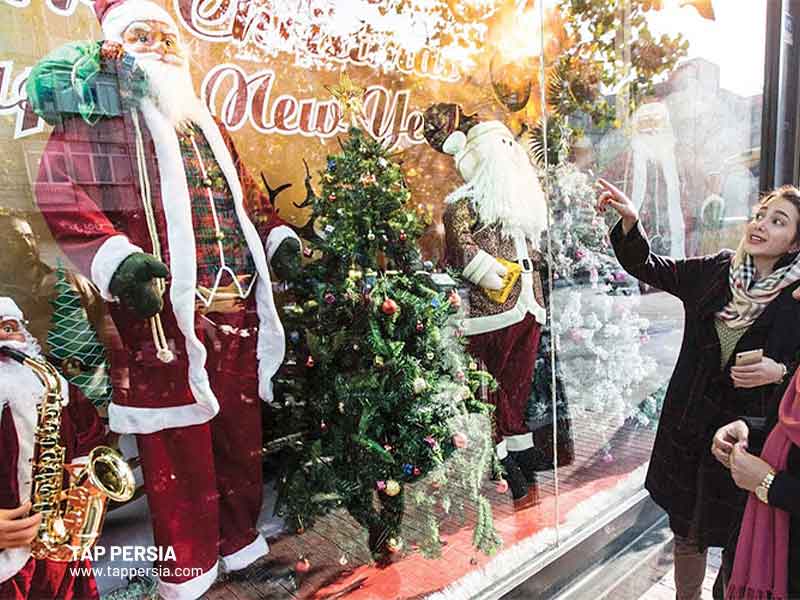
Iran’s “Little Feast,” often known as Christmas, is preceded by the tradition of avoiding animal products for 25 days starting on December 1. The goal of fasting is to cleanse the soul to make room for Jesus Christ. Before the sun rises on Iran Christmas Day, after the Little Fast has ended, people attend Mass to receive Communion and break the fast. The preparations for the large Christmas supper have officially begun.
The meal known as “Harissa,” which is a chicken and barley stew prepared in big amounts to be eaten over a number of days, is the traditional dinner during Christmas in Iran. In Iran, Christians celebrate Christmas by hosting private events, visiting loved ones, and exchanging presents. Iranians even sing holiday songs, primarily to celebrate the birth of Jesus Christ.
Armenian-Iranians and Christmas in Iran
While some Iranian Christians celebrate Christmas in Iran on December 25 and New Year’s Day on January 1, Armenians celebrate Christmas on January 6 at the same time as the Epiphany.
Christian Neighborhoods of Tehran
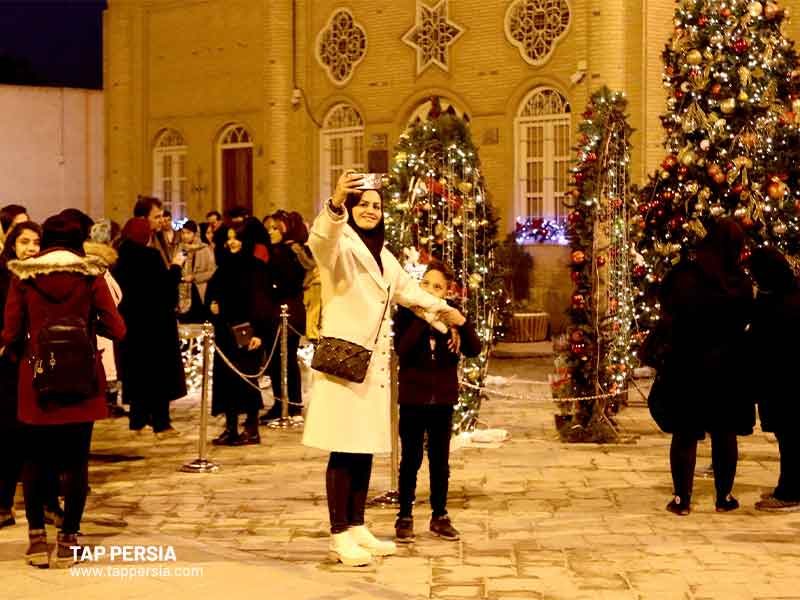
The Christmas culture and spirit are not just limited to the Christian areas of Tehran, despite the fact that some shops, especially those in the northern parts of the city, devote at least some of their shop windows to decorations like snow globes, Santa Claus figurines, and candy canes.
Municipal officials in Iran have recently erected banners commemorating Jesus’ birth on a number of major avenues and at the St. Sarkis Armenian Church on Villa Avenue, where a ceremony is performed each year.
During Christmas in Iran, Tehran has no such limitation in contrast to other nations in the area where public Christmas celebration is restricted to hotels frequented by foreigners. Christmas ornament sales, which were once restricted to Christian neighborhoods in the early years of the Islamic Revolution, are now prevalent across the city.
In reality, Iran celebrates Christmas with decorations and festivities, especially in important cities like Tabriz, Isfahan, Shiraz, and even holy sites like Mashhad.
Do Muslims in Iran Celebrate Christmas?

Christmas is not a frequently observed holiday among Muslims in Iran, nor is it a federal holiday. Only 0.15 percent of Iranians identify as Christians. Iranian Christians tend to be immigrants from Armenia.
What Do Iranians Put on a Christmas tree?
Every Christmas tree on the globe has the same decorations. Christmas trees decked out with green, red, and gold gift boxes can be seen at the front doors of many hotels and shopping centers.
What Gifts Are Appropriate or Inappropriate in Iran?
Iranian etiquette distinguishes between presents that are proper and inappropriate. For instance, bringing flowers or pastries to the hosts when visiting an Iranian home is customary. On the other hand, it is disrespectful to bring alcohol to someone’s home, particularly if they are Muslim.
This article(Iranian gift) will guide you on what kind of gift is suitable for our Iranian friends.





